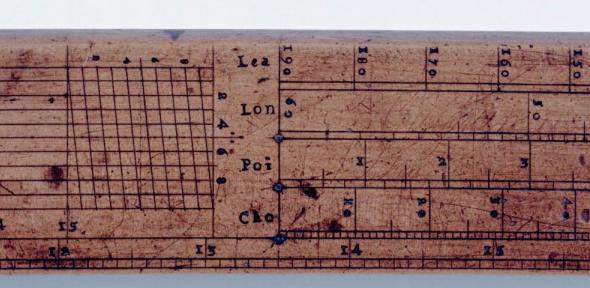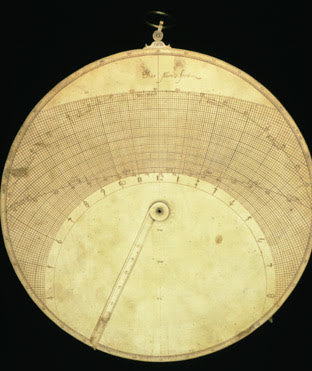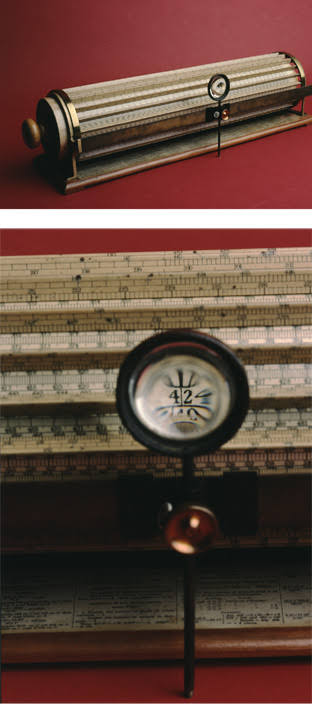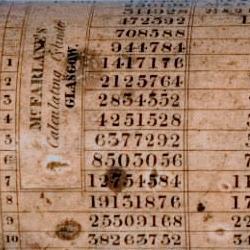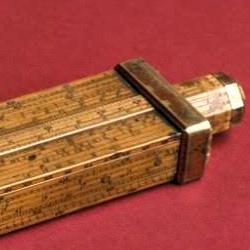The slide rule's origins can be traced to the British mathematician Edmund Gunter (1581-1626). Gunter distinguished himself through the design of calculating devices, and was the first to use logarithmic scales for physical instruments.
He arranged logarithms into a scale, known as Gunter's line, which was then made into a two-foot rule with one side marked with logarithms and the other rulings for navigation (above) . By using a logarithmic scale to enable the conversion of multiplication and division into addition and subtraction, these rules were the predecessor of the slide rule. The example shown here was made by Robert Yeff in 1712, and was probably used as a general-purpose calculator at sea, where it would have been referred to simply as a "Gunter."


